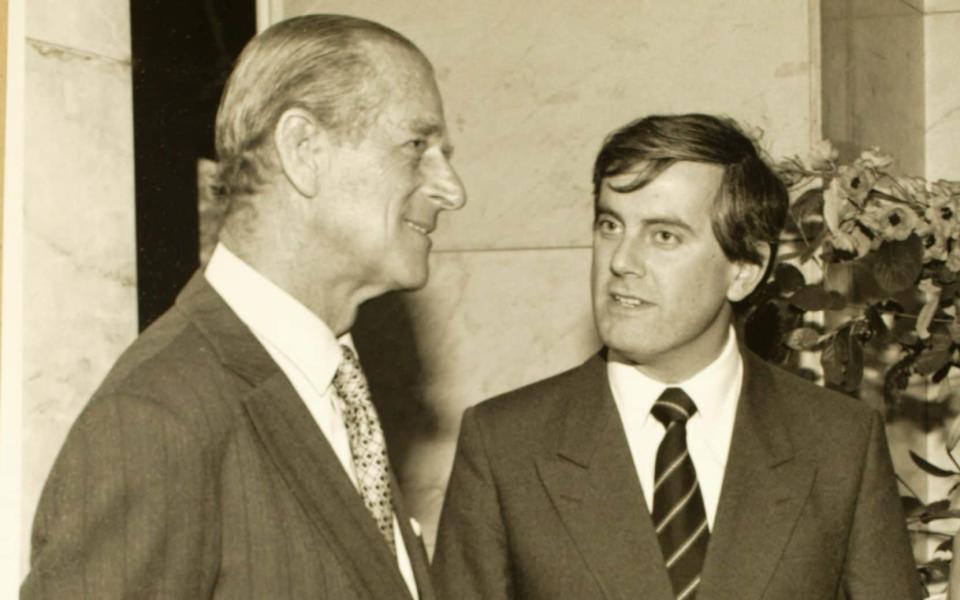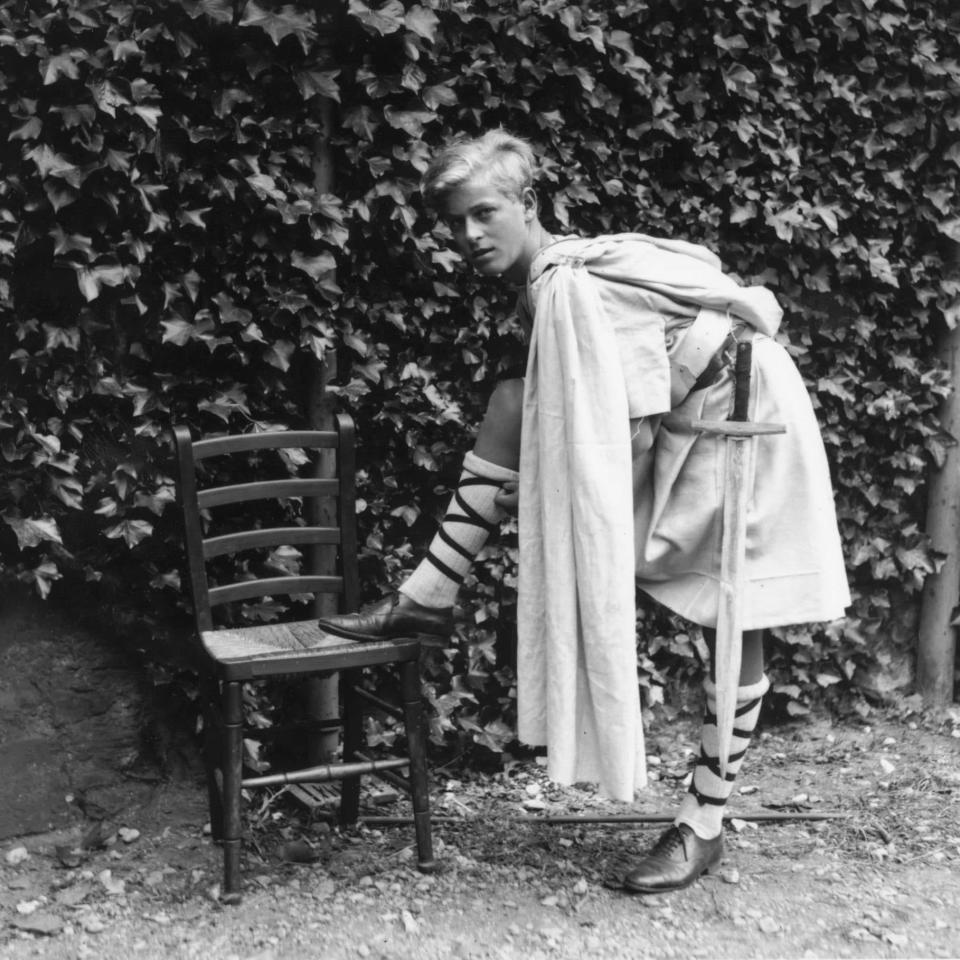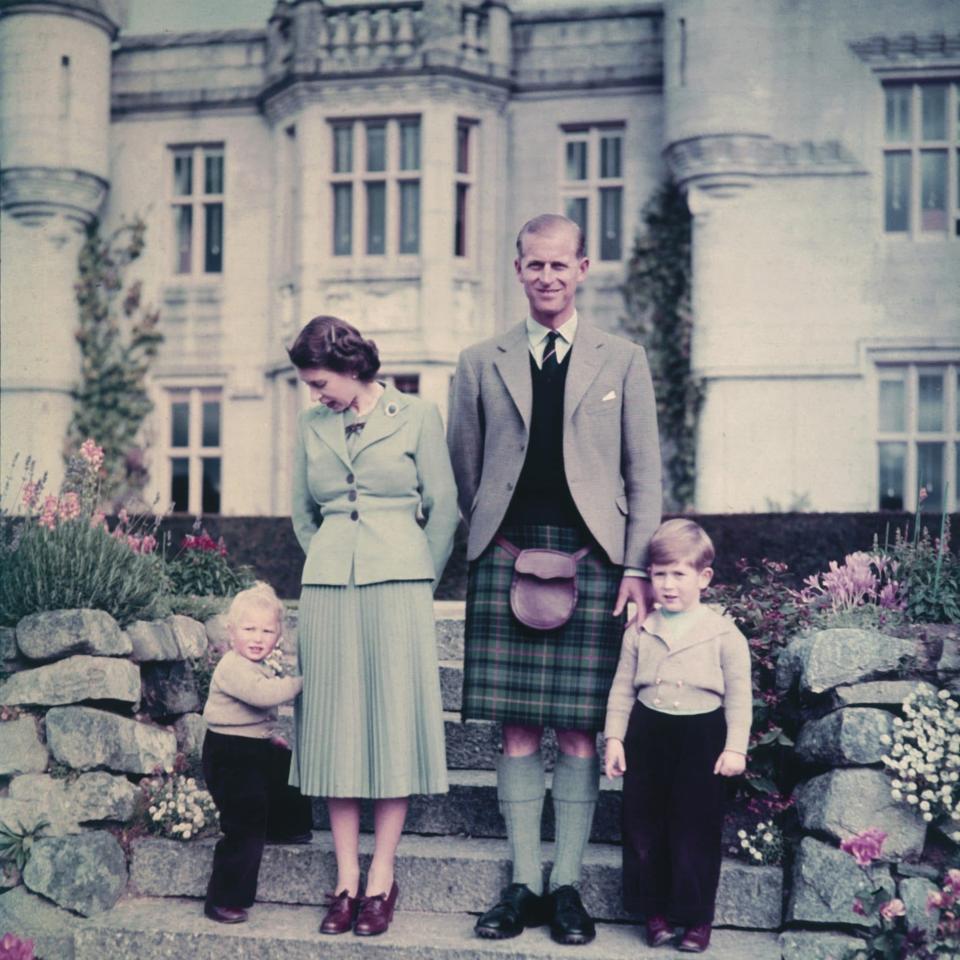Gyles Brandreth was Prince Philip's Boswell – and this intimate biography is a sparkling celebration

The most interesting revelation in this biography of the Duke of Edinburgh concerns his being taken ill during the Diamond Jubilee weekend in 2012. We all know that a pre-existing bladder infection was exacerbated by his standing in the rain for hours during the river pageant. But, as he told Gyles Brandreth, the reason he and the Queen stayed upright was that they didn’t want to sit on the grandiose thrones the organisers had provided for them. “We’d have looked like Mr and Mrs Beckham, wouldn’t we?”
One imagines that the Duke did not regret this decision, however painful the result. He had done his bit to protect the dignity of the Queen and struck another blow in his endless, hopeless campaign to keep some sort of differentiation between the Royal family and the world of celebrity; and he had stood, as long as he was physically capable, by the Queen’s side, where he ought to be.
Whether the Queen approved, we don’t know; she may well have been infuriated that he hadn’t stayed at home tucked up with a hot water bottle. The other big revelation in this book is that it was the Queen who coaxed her husband into finally retiring, at 96; she wanted to stop him “pushing himself all the time”, according to Brandreth’s unidentified source.
Apart from that, all the juiciest bits of gossip in this volume will be familiar to many readers, as the bulk of the book has already been published under the title Philip and Elizabeth: Portrait of a Marriage (2004). Still, although the scoops no longer sizzle, there are so many of them – the revelation that, contrary to popular belief, the Queen and the Duke usually slept in the same bed; Brandreth’s interview with Paul Burrell, in which he claimed that “Prince Philip did more to save [Diana’s] marriage than Prince Charles” – that the book is well worth re-reading.
Brandreth has revised the old material – pointing out, for example, instances where the reality of events differs from their depiction in The Crown – and brought the story up to date. It may seem rather misleading for a joint study of the Queen and Prince Philip to now be repackaged as a biography of the Duke; but in truth Brandreth never seems as interested in the Queen as he is in Philip, and once the section on her antecedents and early years is out of the way he rarely stops devoting his attention to the Duke for long.

The book draws on extensive conversations that Brandreth had with the Duke over many years. There are strong echoes of Dr Johnson and Boswell in their relationship as portrayed here, with the subject shrewd enough to recognise and respond to the skill and sympathy beneath the biographer’s clownish and egotistical exterior.
But despite Brandreth’s efforts, the Duke offers few insights into his own personality. He seems to have been not so much deliberately obstructive – regarding the writing of the biography as essentially pointless but harmless – as to have genuinely never given much thought to his motivations, his proudest achievements or his regrets, the effect of his peripatetic childhood on his character, the reasons why his relationships with his children took the course they did. Brandreth’s sessions quizzing the Duke about personal matters must have sounded like an episode of Mastermind in which the contestant had mugged up the wrong specialist subject – “Pass – pass – pass.”
It hardly matters, though, as the well-connected Brandreth has had access to so many other horses’ mouths. Sarah, Duchess of York, spills the beans on her falling-out with her father-in-law: “As soon as I came in through one door he’d be falling over the corgis to get out of the other.”
The widely held view that the Queen had a strained relationship with Maragret Thatcher is dismissed as “a lot of nonsense” by Lady Thatcher herself. And the Queen’s late cousin, Margaret Rhodes, proved to be wonderfully loose-lipped: “‘Philip can’t bring himself to be close with Charles… Perhaps you don’t learn to give love if you haven’t had love.”

A born entertainer, Brandreth knows how to race through the important but boring elements of his subject’s life as painlessly as possible, and how to make the most of the interesting bits. Irrelevance is no handicap to a good anecdote or a interesting bit of trivia: it is simply bunged into one of the innumerable footnotes.
He certainly brings Prince Philip vividly to life. But I wonder whether his book will quite satisfy the many people who have been surprised by what they have read in the obituaries over the past few days, and want to know more about his Christianity, or his achievements as a writer and thinker. There seems to be a widespread dawning that there is a real gap between the Duke we thought we knew and the reality (which was not the case when, say, Princess Margaret or the Queen Mother died).
The Duke thought ideas were more interesting than personalities (perhaps the only opinion he held in common with Tony Benn) and, we are told, berated Brandreth for holding the opposite view. Brandreth’s focus on people and gossip leads him to skim over the Duke’s hinterland, his intellectual and spiritual side.
As a sparkling celebration of Prince Philip, the book will be hard to beat, but there is room for a biography that gets further to the heart of him.

